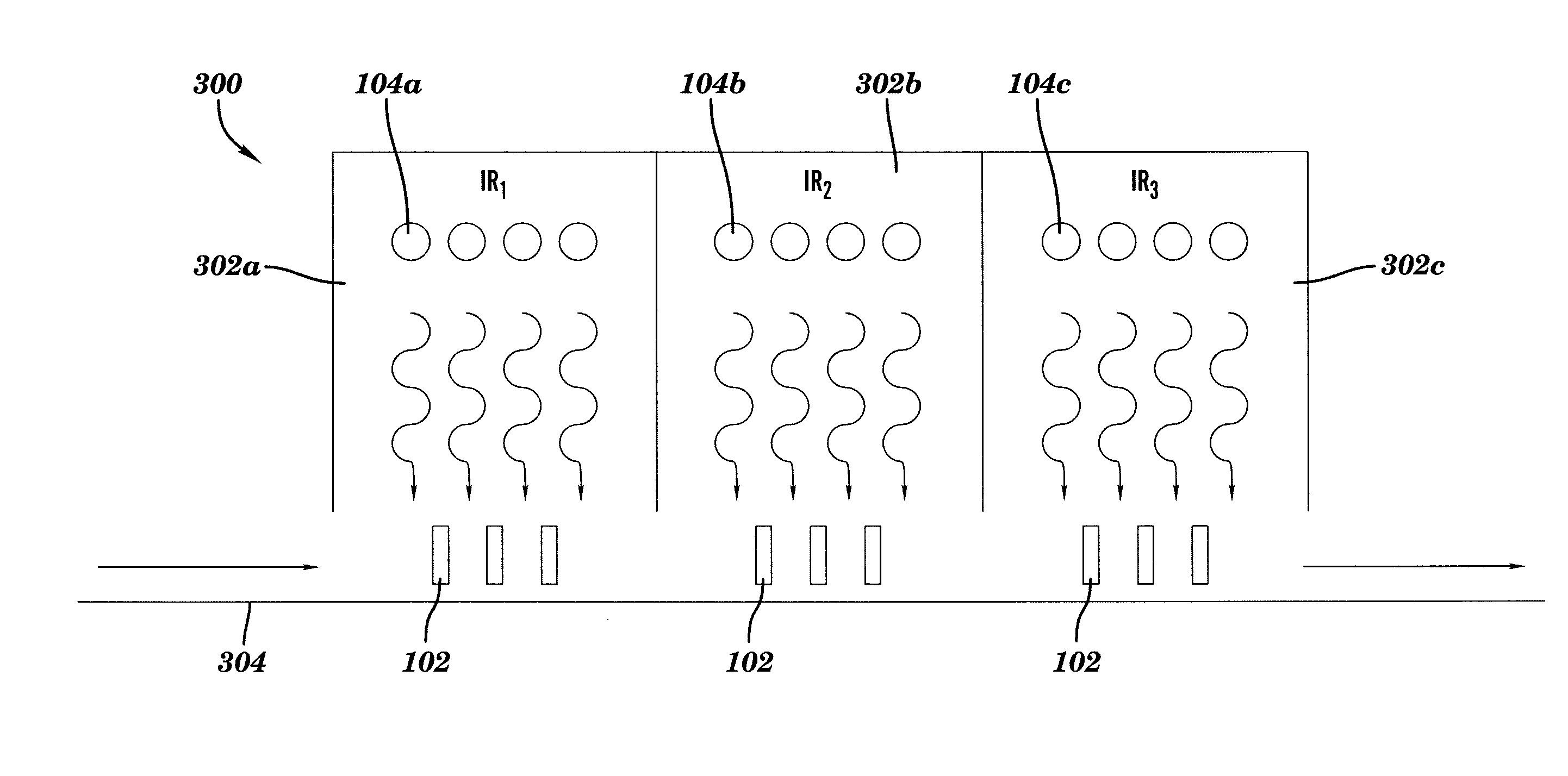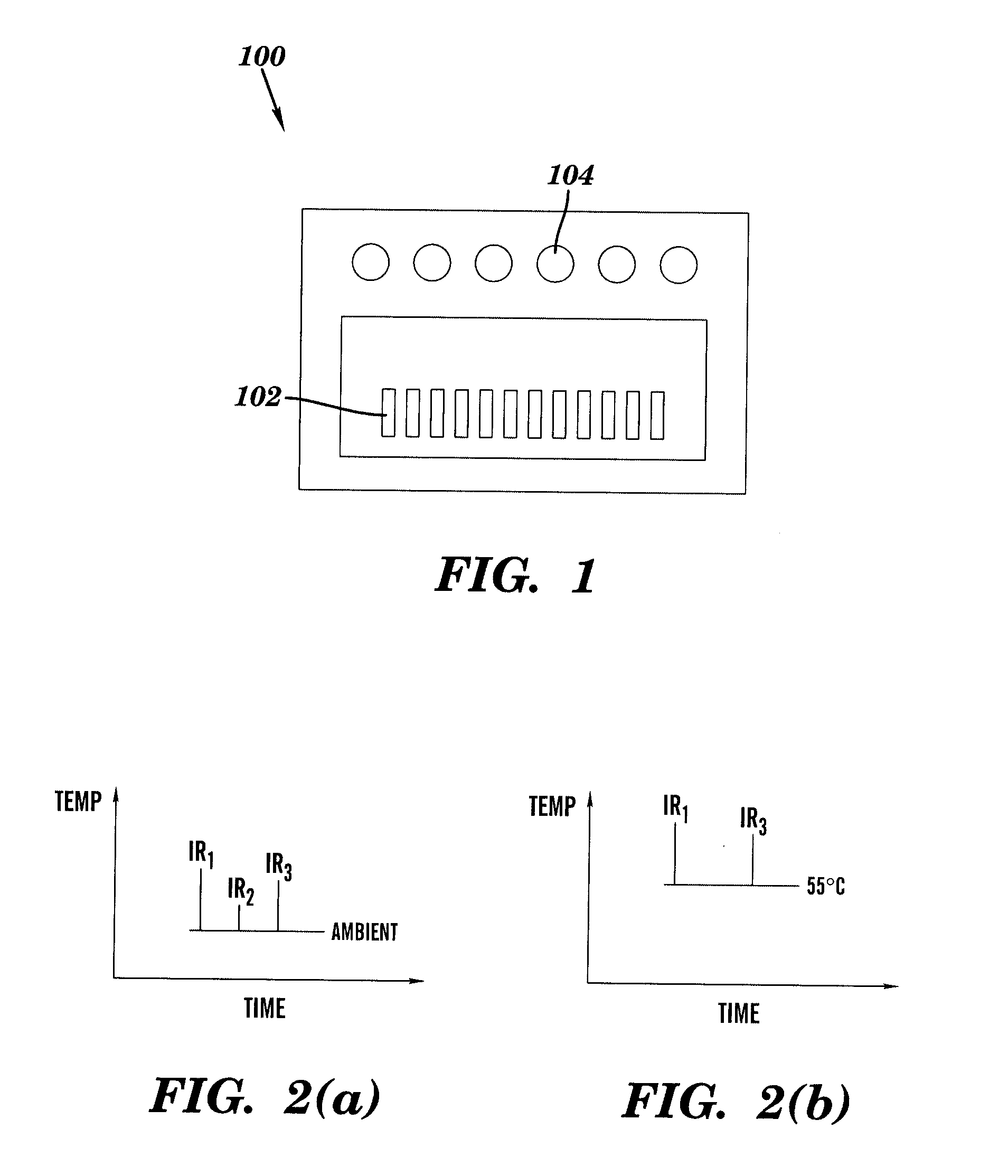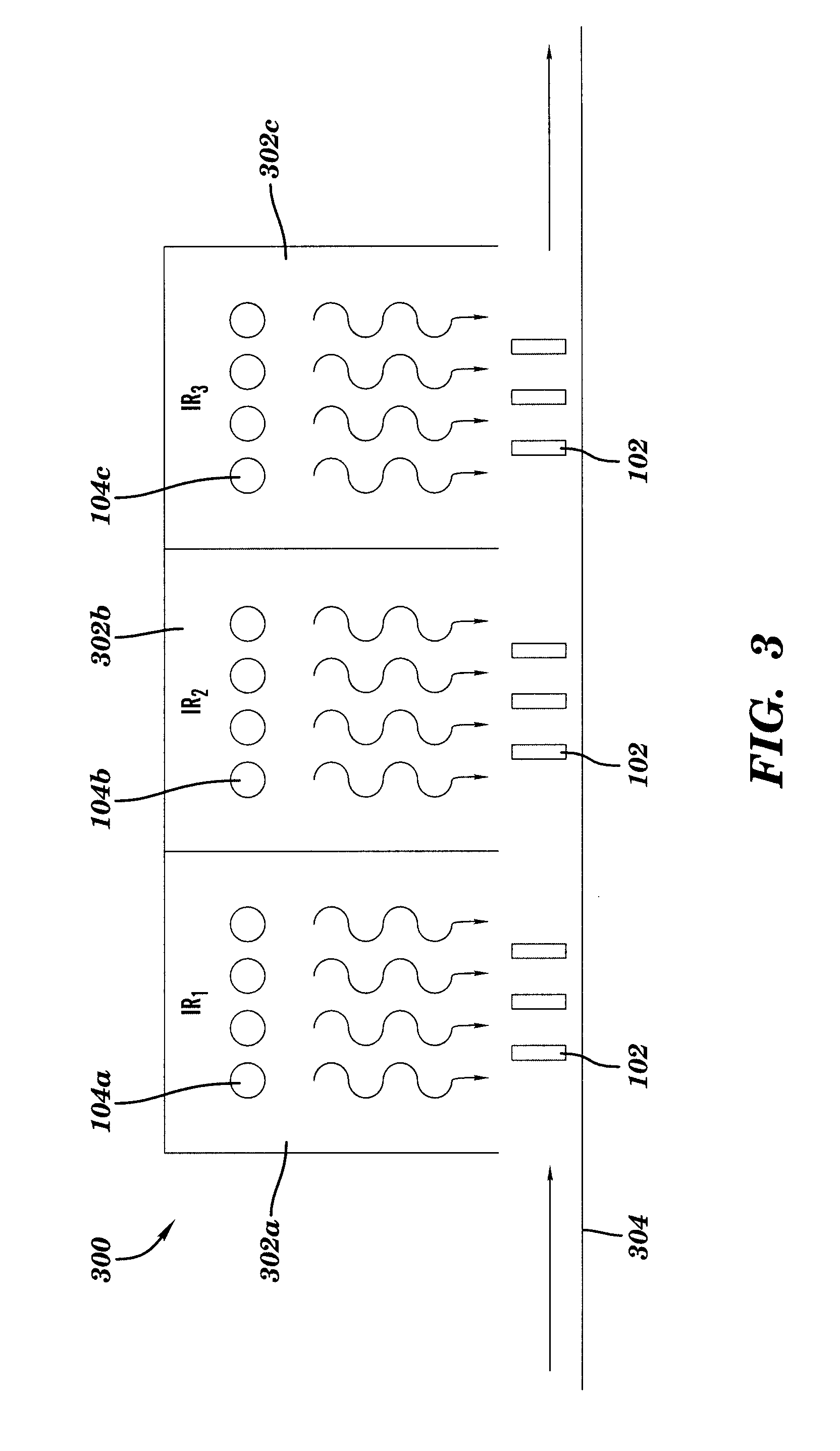Method and apparatus for precise temperature cycling in chemical/biochemical processes
a technology of chemical/biochemical processes and temperature cycling, applied in biochemical apparatus and processes, fermentation, instruments, etc., can solve the problem of large thermal budget needed to heat metal blocks or water
- Summary
- Abstract
- Description
- Claims
- Application Information
AI Technical Summary
Benefits of technology
Problems solved by technology
Method used
Image
Examples
Embodiment Construction
[0015] Disclosed herein is a method and apparatus for precise temperature cycling in chemical / biochemical processes (e.g., PCR), in which infrared (IR) resonant heating is used to selectively heat a chemical / biochemical culture. When electromagnetic (EM) radiation resonates at the natural vibrational frequency of a bond of a molecule in the material to which the EM energy is applied, the energy is absorbed and is manifested as heating, as a result of an increased amplitude of vibration. The resonant heating therefore enhances specificity of reactions, since only the desired molecules are directly heated by application of specific wavelengths of the EM radiation. With a large number of vibrational modes available for any given asymmetric surface species, resonance at a specific IR wavelength can be exploited to heat only the desired component. As a result, the application of selective resonant heating can effectively heat specific bonds to a desired temperature, thus attaining a much...
PUM
| Property | Measurement | Unit |
|---|---|---|
| temperature | aaaaa | aaaaa |
| temperature | aaaaa | aaaaa |
| temperature | aaaaa | aaaaa |
Abstract
Description
Claims
Application Information
 Login to View More
Login to View More - R&D
- Intellectual Property
- Life Sciences
- Materials
- Tech Scout
- Unparalleled Data Quality
- Higher Quality Content
- 60% Fewer Hallucinations
Browse by: Latest US Patents, China's latest patents, Technical Efficacy Thesaurus, Application Domain, Technology Topic, Popular Technical Reports.
© 2025 PatSnap. All rights reserved.Legal|Privacy policy|Modern Slavery Act Transparency Statement|Sitemap|About US| Contact US: help@patsnap.com



